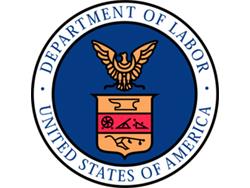Consumer Prices Rose 3.5% YOY in March
Washington, DC, April 10, 2024-The Consumer Price Index for All Urban Consumers increased 0.4% in March on a seasonally adjusted basis, the same increase as in February, the U.S. Bureau of Labor Statistics reported, and over the last 12 months, the all-items index increased 3.5% before seasonal adjustment, which the Wall Street Journal called "hotter than expected."
The index for shelter rose in March, as did the index for gasoline. Combined, these two indexes contributed over half of the monthly increase in the index for all items. The energy index rose 1.1% over the month. The food index rose 0.1% in March. The food at home index was unchanged, while the food away from home index rose 0.3% over the month.
“Stubborn inflation pressures persisted in March, seriously weakening the case for the Federal Reserve to begin cutting interest rates in June,” according to the Wall Street Journal.
“The consumer-price index, a measure of goods and services prices across the economy, rose 3.5% in March from a year earlier, the Labor Department said Wednesday. That was a touch higher than economists had forecast and a pickup from February’s 3.2%.
Excluding volatile food and energy categories, so-called core prices rose 3.8% from a year earlier. Of particular interest to investors and economists who care mostly about recent trends, the increase in core prices was 0.4% over a one-month period. That was above economists’ expectations for a 0.3% gain. It matched the increases of the previous two months, which had also topped forecasts.
“Stock futures fell and yields climbed on U.S. government bonds right after the report, reflecting bets that the data could help delay and diminish future interest-rate reductions. The yield on the benchmark 10-year Treasury note touched 4.5% for the first time since November, according to Tradeweb, up from 4.365% Tuesday.
“Wednesday’s report had been hotly anticipated because Fed leaders had been willing to downplay firmer-than-anticipated inflation readings in January and February as reflecting potential seasonal quirks. But a third straight month of above-expectations inflation data erodes that story and could lead Fed officials to postpone anticipated rate cuts until July or later.
“Fed officials have been optimistic about achieving a so-called soft landing in which inflation slows without a sharp downturn in economic activity. To do that, some officials wanted to cut rates preemptively before the economy weakens notably. The latest report sets back that effort by depriving them of a credible justification for cutting rates, and it could prompt them to hold rates at their current level, the highest in 23 years, until they see more cracks in the economy.”
